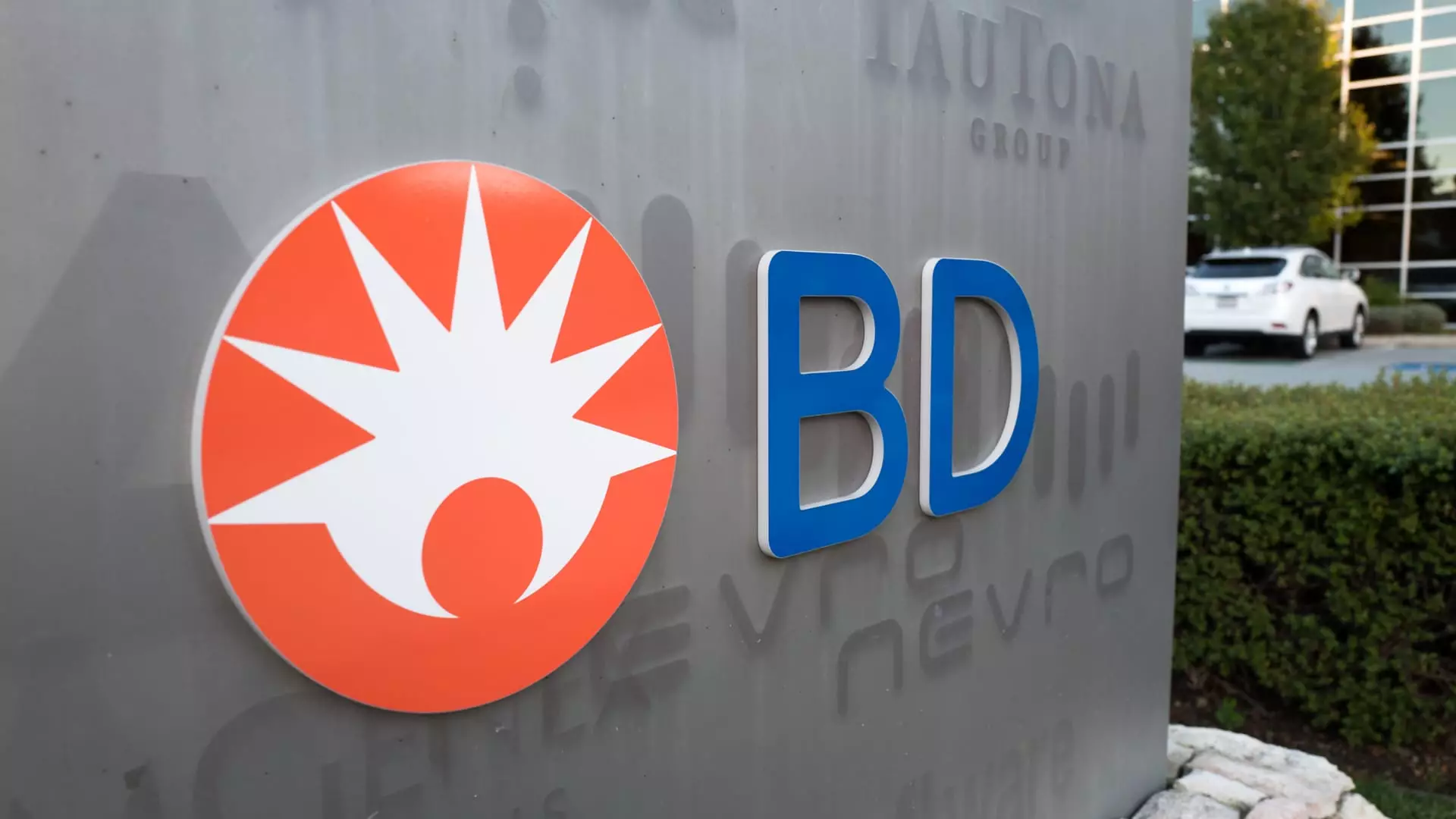Becton Dickinson (BDX) stands as a prominent figure in the global medical technology landscape, engaging in the development, manufacturing, and distribution of various medical supplies and diagnostic products utilized by healthcare professionals and institutions worldwide. With a market capitalization hovering around $66.65 billion and stock valuation reaching approximately $229.85 per share, BDX illustrates a robust presence. However, despite its formidable size and reputation, the company currently faces strategic scrutiny, particularly surrounding the delineation of its business divisions.
At the forefront of BDX’s strategic conversation is Starboard Value, a well-known activist investment firm celebrated for its historical effectiveness in enhancing operational efficiency and shareholder value. Starboard’s prior campaigns have exhibited a remarkable return of 32.96% compared to the Russell 2000’s 14.61%. Such performance is indicative of Starboard’s adeptness at diagnosing opportunities for improvement within corporate structures.
Starboard’s recent engagement with BDX on February 3, marked by their public request for the separation of the life sciences division, underscores an increasingly common strategy among activist investors. The call for structural division is not merely a reaction to market underperformance but also a reflection on operational alignment, as different divisions exhibit distinct growth trajectories and valuation profiles.
BDX is primarily divided into two business segments: MedTech and Life Sciences. MedTech encompasses BD Medical and BD Interventional, focusing on medication delivery solutions and interventional products, which have seen increased demand owing to market trends. In contrast, BD Life Sciences provides diagnostic technologies that cater to the diagnostics and laboratory needs essential for various health applications.
Currently, the MedTech segment is outpacing Life Sciences, generating approximately $15.1 billion in revenue against Life Sciences’ $5.2 billion. The divergence in growth rates, with MedTech realizing mid-single-digit growth while Life Sciences trends toward low-single-digit increases, raises questions about the benefit of maintaining these diverging segments under one corporate roof.
A clear indication of the potential value inherent in these disparate divisions emerges from a financial analysis. MedTech’s higher growth prospects could warrant a valuation multiple between 13 to 14 times EBITDA, translating into substantial long-term benefits if separated from Life Sciences, which may enjoy upwards of 20 times EBITDA due to its perceived stability and lesser vulnerability to market fluctuations.
Should these divisions operate independently, BDX could potentially see its market value surge beyond a collective $110 billion. This segmentation would allow each company to tailor its operational and strategic priorities, ultimately giving management the precision required to propel growth and profitability.
The proposed separation extends beyond immediate financial revaluation; it offers strategic recalibration in management focus. By splitting, each segment can pursue dedicated strategies directed toward their specific markets without the encumbrance of competing interests. For MedTech, this could mean aggressive expansion and sharper investment into new technologies, whereas Life Sciences could focus on optimizing its operations and enhancing its competitive edge by seeking synergies with other players.
This delineation also invites a broadened investor base for both entities, attracting those who prefer focused investments. The control of individual management teams will ensure that decision-making reflects the unique requirements and market conditions of their respective divisions.
Starboard’s intervention in Becton Dickinson serves as a case study in contemporary corporate governance dynamics. While traditionally, activist investors are associated with aggressive tactics, Starboard appears to be working in concert with BDX’s management, which has already indicated a willingness to explore the division of its life sciences operations. This collaborative approach highlights the evolving relationship between corporate management and activist shareholders where mutual recognition of corporate potential leads to strategic innovation rather than confrontation.
Importantly, Starboard’s influence is in pushing BDX to act decisively rather than forcing action through contentious measures, a refreshing change in activist investment strategies that typically lean toward disruption.
In summation, Becton Dickinson stands at a pivotal juncture. The potential separation of its MedTech and Life Sciences divisions presents substantial opportunities for enhanced shareholder value and operational efficiency. As the company navigates these strategic considerations, the role of activist investors like Starboard Value may prove instrumental in ensuring that BDX not only recognizes its latent potentials but also takes calculated steps toward realizing them in a cost-effective and streamlined manner. Whether through a spin-off or strategic realignment, the future holds promising possibilities for BDX to elevate its standing in the ever-evolving healthcare landscape.

